The right story can help folks feel connected to your mission, even if they’ve never shared the same experience.
But those stories belong to the community you serve, and sharing them requires care. Without the right approach, even the best intentions can cause harm to the very people you exist to support.
If you’ve ever felt unsure how to handle these stories with care, this Office Hours is for you.
We’re joined by Carly Euler of MemoryFox to share expert advice for collecting better stories and sharing them more effectively on your nonprofit website.
Ethical Storytelling Report
Grab your copy of the 2024 Ethical Storytelling Report for more best practices and strategies from MemoryFox.
Video Transcript
This webinar was originally part of our Nonprofit Website Office Hours series. The transcript has been lightly edited for clarity.
For today’s Office Hours, I want to go over some really quick, high-level stuff in terms of ethically collecting and sharing stories on your website. And then I’m so excited to see all of your questions!
Because like I said, this is going to be kind of quick hits, top-level stuff, and then I’m excited to actually get your questions answered, especially with the expertise from Wired Impact to talk even more about the actual website stuff too, right?
So, why wait? Let’s get right in.
David already did a wonderful job, but I am the marketing director here at MemoryFox. I organized and created the 2023 and the 2024 Ethical Storytelling Report.
Before that, I did work at nonprofits, so I’ve worked at a lot of different missions, a lot of different sizes, a lot of different revenue streams. I mostly specialized in communications, peer-to-peer campaigns, sponsorships and special events.
I don’t even know if you could call that specializing in anything, because that’s so many things! But those are the things I got to work on most.
Some of the nonprofits that I have either worked at or volunteered for include the Breast Cancer Coalition, Code of Support Foundation, the Wily Network, Kenya Lacrosse Association, and The BOMA Project. I always like to shout out the really cool places and really cool missions that I’ve been a part of!
2024 Ethical Storytelling Report
So, like I said, all of the information today is actually something I gleaned from the 2024 Ethical Storytelling Report. If you want to get a copy, you can go ahead and download it. It’s completely free to download.
The idea behind the report was that we felt like there wasn’t a resource out there where all the top thought leaders that were thinking about ethical storytelling had put their thoughts in one place.
This report is long, it’s thorough, and there are a lot of topics covered. If you are interested in deep diving into any of the topics we talk about today, or just learning from any of our 30 experts that are featured in the report, I highly recommend a download.
And let me know what you like about the report, because I’m going to start putting together the 2025 report any day now. So I would love to hear things that you like, things that should be included in next year’s report as well.
From a top level, some of the biggest things that the report covers include ethical story collection, trauma-informed interviewing, stereotype stories, consent and privacy.
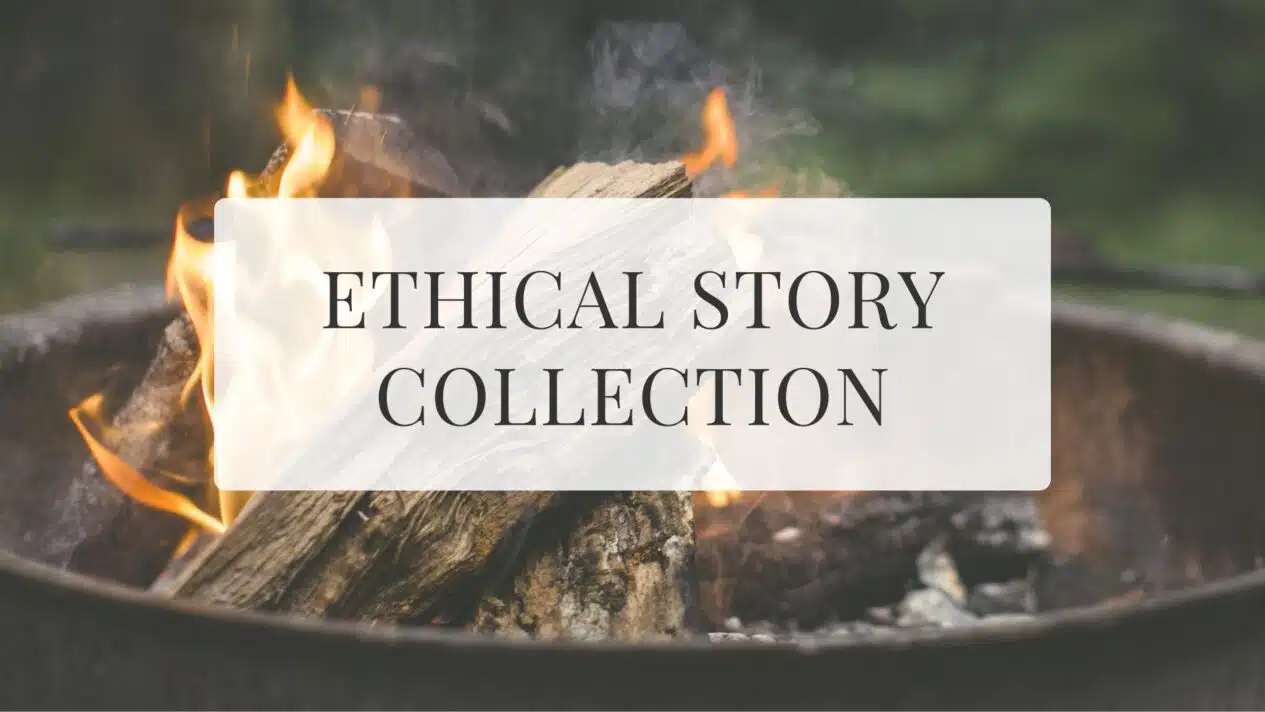
Ethical Story Collection
Today, I want to start off by first talking about ethical story collection. I know that’s a big topic that people often have questions about because they think, or they know, that the stories that come from their community might be a little sensitive or a little challenging to collect in the past.
So, I first want to start off by saying I have five keys to ethical story collection. But before I share this, I do want to share a really cool example of a story that we would consider an ethically collected story.
This comes from our friends at I Would Rather Be Reading. They are a nonprofit located in Kentucky. If you’ve heard of them before, or if you just think that sounds like a great mission, give me a thumbs up in the chat.
They are located in Kentucky. They started as an after-school program and now they’ve expanded to summer programs, as well, and it’s all focused on reading. They do a wonderful job of that, and they are great ethical storytellers.
Here’s just a clip from one video that they collected for their nonprofit:
“Hi, my name is Kennedy. I am in the second grade and I go to elementary school. And I like the after-school program because we do a lot of fun things, and we get to do centers, and we also get to do our homework, and we get to go outside.”
I love that she says she loves to do her homework! I think that makes this video just really prime content, but also really nice, shareable content that’s collected in real time. And that brings me to our five keys to ethical story collection.
Give your community the microphone.
Let me just start with number one: Give your community the microphone. So what I mean by that is that with today’s technology, you don’t need to speak for others anymore.
And when you actually give your community the opportunity to speak for themselves, they are going to feel more empowered to share exactly the details of the story that they’re wanting to be publicly shared. So that’s just a great consideration when you’re thinking about ethical story collection.
Encourage sharing where and when they are comfortable.
Number two is to encourage sharing where and when they are comfortable. When you allow space for your storyteller to choose the time and place that they’re going to share their story with you, that is going to reduce the stress your storyteller feels, as well as build trust with your storyteller and your organization.
You’ll actually find that, over time, when you are giving your storyteller that agency to decide where and when they’re comfortable sharing, that’s going to lead to them having more details to share and just feeling overall like your brand is more trustworthy.
Be upfront about how you intend to use the story.
Number three is to be upfront about how you intend to use their story. A great example here is that a storyteller might be willing to share more or less information based on where you’re going to share their story or how you’re going to use their story.
So if you know upfront that you are trying to collect stories that you’ll be sharing on social media, let your storytellers know while they’re being recorded or while they’re taking that video themselves.
Then they can really say, “Okay, I have context here. It’s going to go in front of this group of people, this amount of people, and these are the details that I actually feel comfortable sharing for an audience like that.”
On the flip side, if you’re only collecting stories for an upcoming grant report — maybe you just need to get a few impact stories that can go into some grant reports — and you let your storyteller know this is only going to be seen by this select group of people, they might be willing to share more details and add more context for you because they feel like they fully understand the storytelling process.
Use prompts with strengths-based messaging.
Number four is to use prompts with strength-based messaging. So that video I showed you from I Would Rather Be Reading, they are exceptional at using strength-based messaging for their prompts, and that’s why they get their kids so excited to say things on camera.
It’s also another great way that they’re able to ensure that the parents are willing to give consent for those kids’ stories to be shared. So I’m going to talk a little more about strength-based messaging on the next slide, but it’s such a good thing to keep in mind.
Capture stories in real-time, all year.
And my fifth key is to capture stories in real time and all year long. You can see that video was shot on the playground, probably in the middle of her enjoying the day or any activity, right? She really had a fresh answer off the top of her head because she’d probably just experienced it.
This is a great key because, you know, we’re not trained actors. We don’t usually have stories that we’ve rehearsed, off the top of our head. It can actually be kind of hard to recall how you’re feeling or to elicit the same passion that you once felt, if you’re not recording stories in real time.
When you’re able to make space during your programs, or during your fundraising events or volunteer events, to ask some questions, get some recordings, collect stories in the moment, that’s when you’re going to get the most passionate stories, the most honest and real stories, and it’s going to avoid those gaps.
Strengths-Based Messaging
When we’re thinking about strength-based messaging, this is an example from our friends at Horizons National that I always love to show. Horizons National, to give you a little context, is a national brand that has affiliate schools all across the country, and they also do after-school programs and summer programs.
They have programs where they teach children how to swim during the summer. They do learning, they do reading programs, they have a lot of ways that they support their affiliate schools.
But the really cool thing that Horizons National has done is they created a strength-based messaging guide that they sent out to all of their affiliates and really brought them into the conversation to say, “This is how we would like to talk about the communities we work with now. This is how we are going to do it.”
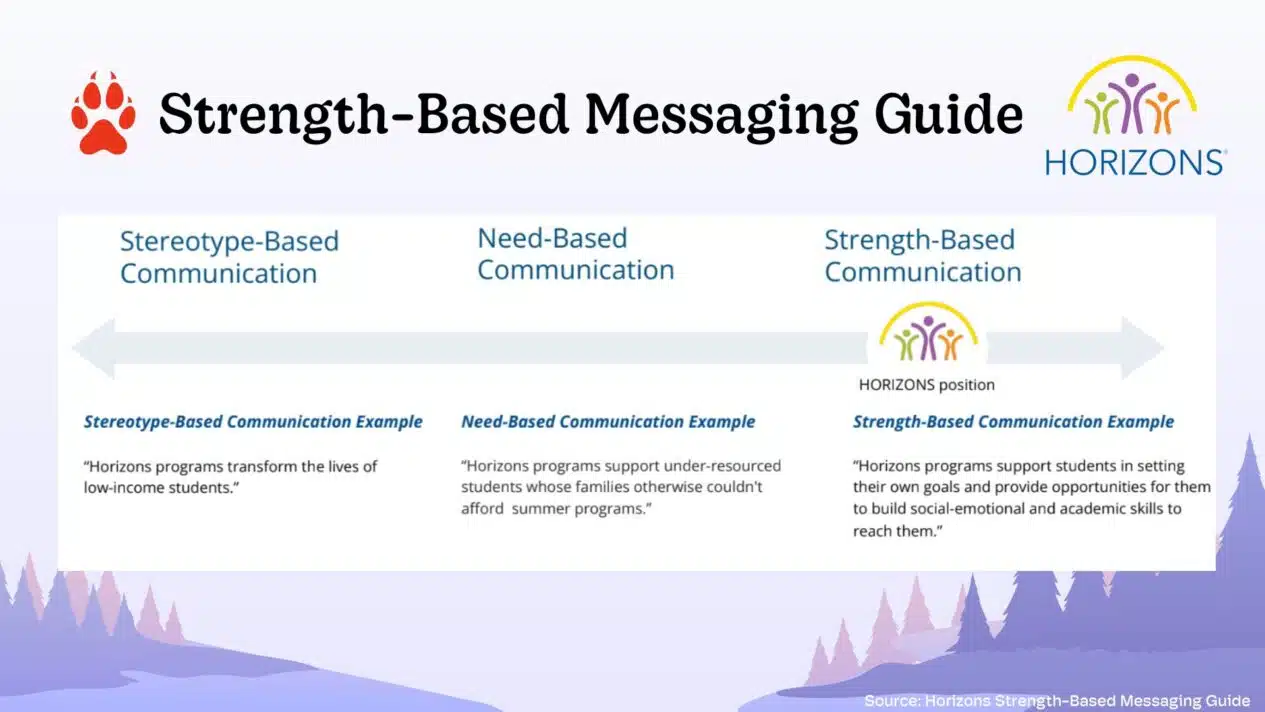
So they put this nice graph — this is just one little snippet from that guide — but I love how they put this visual in here to say, “Hey, we know, we recognize this was the stereotype-based communication, the way we used to refer to our community.”
Their example here is saying, “Horizon’s programs transform the lives of low income students.” That’s a sentence they used to put in their messaging, used to be on their website.
Then they show this evolution to a need-based communication and now ultimately to what they use now, which is strength-based communication.
So an example of how they would talk about their community on their website now would be: “Horizon’s programs support students in setting their own goals and provide opportunities for them to build social, emotional and academic skills to reach them.”
That is just a nice way where you can visually say this is what we all believe in, this is how we’re going to talk about our community. We recognize maybe we have done other things in the past, but this is how we’re doing it moving forward.
I also want to say that I think sometimes people can get caught up in the idea of strength-based messaging as something that will be completely different and maybe completely overwhelming to try. But I would say there are quite a few examples that are really built into our everyday life now that you might be surprised you’re actually already using.
For example, we often see for a domestic violence shelter that they are now referring to the people that they work with as “survivors of domestic violence,” which would be the strength-based, person-first term to use, as opposed to a previous term, which might have been “domestic violence victim”.
Raise your hand in the chat if you have seen that change already, if you’ve seen the change from people using the term “survivor” versus “victim”. I bet you have all seen this in some context at this point.
Another really common one that you see quite often is referring to someone as “a person who is currently unhoused” as opposed to “a person who is homeless” or “a homeless person”, right? So we’re really thinking about that strength-based, person-first term.
Okay, that is a huge topic. Again, if you want to learn more about ethical story collection, you can ask me a question, but also get that report so we can check it out together and you can learn everything from there.
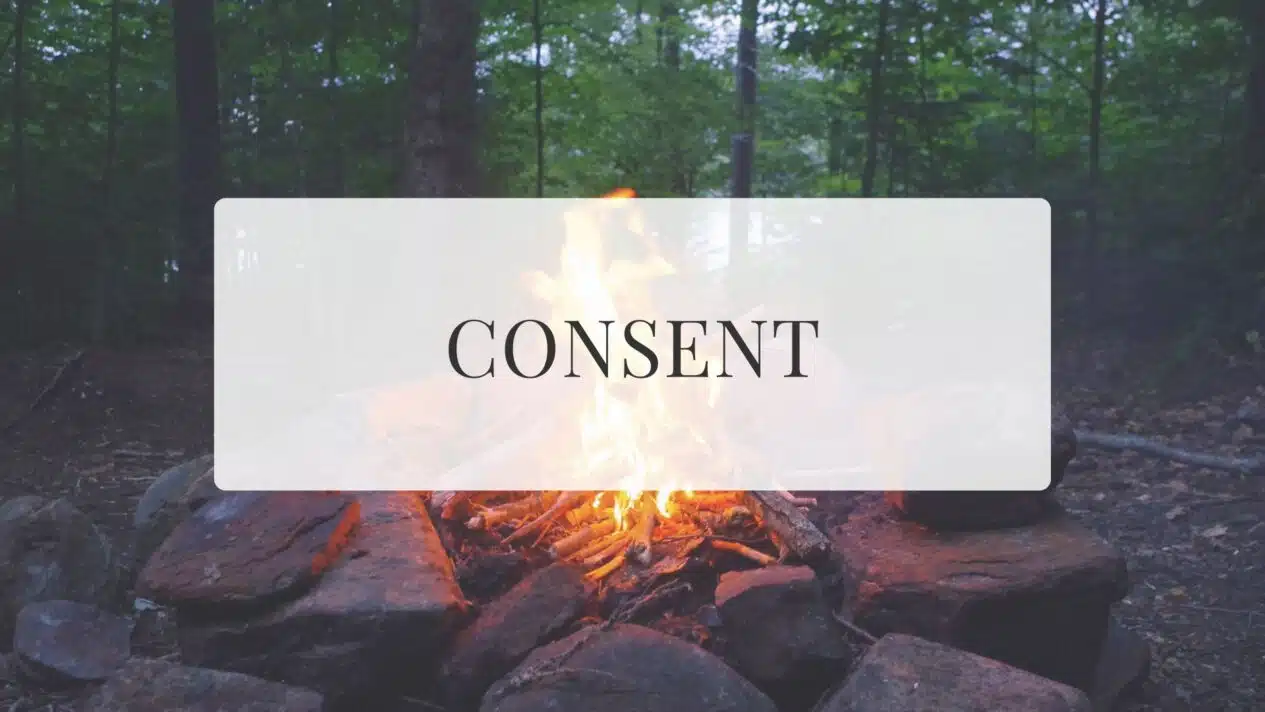
Consent in Storytelling
Now let’s talk a little bit about consent. Consent is actually its own section in the report. There are three big parts, and consent is one of them because there are so many nuances to consent and there are so many things to consider. What I have tried to do for you today is break down a very big topic into four keys to consent.
Get written or electronic consent.
Maybe the biggest thing I want to hit home, and also the easiest thing you can start doing tomorrow, would be to commit to getting written or electronic consent. Let’s no longer rely on verbal consent or implied consent.
What do I mean by this? Maybe somebody sent you an email where they wrote this wonderful testimonial about working with your team and how much hope it brought them and relief it brought them and made them just feel so overwhelmed with support and they’re feeling so much better.
Let’s not assume that we are now able to use that content on our website.
Instead, we need to have a system in place where we go back to them and say, “Wow, this was so wonderful, so powerful that you shared it with me. Would you be willing to fill out my consent form or to click this electronic checkbox to let me know if I’m okay to use this story in this way?”
This often also comes up when we’re talking about big group activities. So if you have programs that meet in person, if you have big volunteer events, big fundraising events, often you might have a videographer or photographer there. And people will say, “Well, how do I gather consent from a big group of people?”
And I would recommend putting that into your registration process or putting it into the signup process. Letting people know whether it’s an opt-in or an opt-out situation, there will be a photographer here, there will be a videographer here, we will be capturing content to use with this intent. Are you okay with that?
That’s the biggest thing you can get started doing.
Strive for informed consent.
And then I would say if you feel like you are really nailing it with getting written consent or getting electronic consent, it’s a good plan to strive for informed consent.
There are a lot of nonprofit consultants that do a really, really great job teaching nonprofits the best practices for informed consent. This is a very small version of informed consent, so keep looking into it if you want to learn more.
But a couple of ways that you can prioritize what we would consider to be informed consent is to actually be with your storyteller and walk through that consent form with them. Just to make sure if they have any questions that come up, they feel like they are fully understanding what is in your consent form and what they’re agreeing to.
And also provide alternative ways for them to understand consent language. So we all know from going to high school, college, grad school — we all learn in different ways, right? Let’s remember that that still exists outside of formal education.
People might learn better by watching a video that’s saying your consent form or listening to audio that’s going through your consent form. Giving people another option is a great way to ensure that they are learning in the way that is easiest for them.
Additionally, if your community primarily speaks another language, it’s a really good idea to have a translator available or have your consent form translated by somebody who also speaks that language primarily.
Consent is not in perpetuity.
For number three, this is a great key and that is that consent is not in perpetuity. So we want to move away from the process of saying, “I collected this story. I’m going to use it forever and ever, and I’m never going to ask for any other updates. I’m never going to ask for consent again.”
Let’s remove that narrative from our sentences and let’s instead say, “We have a system in place where we’re going to check back every five years, every two years, whatever works for you.”
And just remind ourselves, there might be a lot of different reasons why somebody might not want that story shared again in the future. They have agreed to something at one point, and you honored that. Let’s not assume that they’re going to agree again in the future. So let’s check back.
Another great way to do this is to always provide an option for removal, for actual consent removal. That’s something we built into MemoryFox. When somebody submits a story, they always have the option to now take back their story.
You know, maybe they thought about it and a week later they just said, “You know what? I actually don’t want that video shared, or actually no longer want that photo shared.”
And in that case, when we’re talking about stories being shared on websites specifically, when somebody removes that consent, let’s take that story down. Right?
And I already touched on this, but check back in regularly. You’re probably going to find that in some cases, it might be hard to get back in communication with some of your storytellers. And of course in that way, that means you might be in a position where you need to retire that story.
But on the flip side, you also might find that you check back in with storytellers, and they are saying, “Wow, you know what? I’m totally fine with you sharing that story. However, I have an update for you. Let me tell you about how my life has been further impacted, or let me tell you about the 10 other people that I have now helped with what you taught me.”
So checking back in regularly is a great way to expand on a story and also continue to learn more about your community.
Consider the risks.
And then finally, I have been working with my friend, Ally Levine. She is a nonprofit attorney. She introduced this idea to me that consent, at its core, of course when you talk to an attorney, is about risks, right?
So when you’re thinking about what needs to be included in your consent forms, in your release forms, we need to be thinking about the risks that are associated with that for your storyteller as well as for your nonprofit, on both sides, right?
That comes with a process of identifying, assessing, managing and monitoring your risks. It also comes with a process of thinking about your own state laws, taking a look at your state laws. That is super important because laws are different in every state.
And then of course, if you are able to have somebody on your board or somebody that you can go to for legal counsel, maybe somebody like Ally, for example, it’s a great idea to get that language checked over with them and make sure that you are, in fact, mitigating your risks.
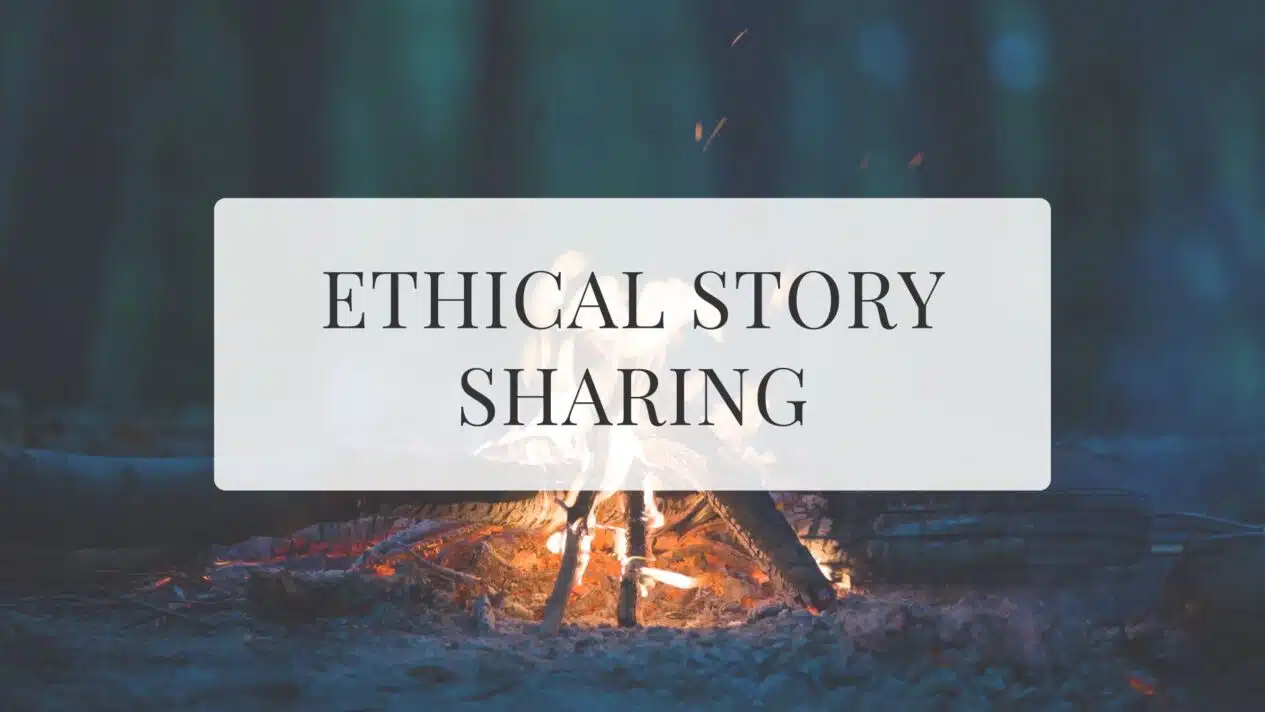
Ethical Story Sharing
Alright, let’s talk about ethical story sharing. When we’re thinking about sharing a story, we have been taught again and again that the most important part of a story is the emotion that you’re bringing out of your potential donors.
Right? If we’re talking about getting people motivated to give, that often comes with an emotional story, by evoking an emotion, by making people feel something.
However, maybe historically we’ve done that in a way where you might consider it “poverty porn”. Let me know if you’ve heard that term before. Give me a thumbs up in the chat if you’ve heard that term before. I’m seeing a lot of people with hands up, so they’ve seen that before.
That is not something we want to do in the future, of course.
So when you’re thinking about avoiding that old-fashioned, poverty porn-style story, we’re going to think about these four things to remember when you’re writing an emotional story.
Consider the Golden Rule.
Number one is to consider the golden rule. We probably all remember learning the Golden Rule when we were in kindergarten or first grade. It means, of course, to treat others the way you want to be treated. But this is a really good rule for storytelling as well.
Because, before you share a story, think about if you were the main character, if a loved one were the main character, are you okay with how that story is being portrayed? Would you want your story told that way?
If you’re looking at this story and you’re saying, “No, that makes me uncomfortable,” it’s definitely time to go back to that editing process and rethink a few things.
Positive emotions are emotions.
Number two, this one I love. It is so important. And that is to remember that positive emotions are still emotions.
There have been a lot of studies, especially lately, that are coming out that show that eliciting positive emotions from your donors not only encourages them to give now, but also to give again and again in the future — which of course, recurring giving is the goldmine for everybody, right?
We often think if we are telling an emotional story, it needs to be about sadness, despair, even anger — things that, you know, are making us feel all these negatively charged emotions.
But I want to remind you that there’s a full spectrum of emotions that inspires audiences to give. And when I’m thinking about impactful storytelling, I like to elicit hope or relief when I’m talking about my clients.
When you are able to write a story that’s gives the donor hope for the future or relief(like you have really solved a problem for your client, for your family member, for your constituent — you are able to give that donor the feeling of, “Hey, I’m a part of this long-term solution. I want to continue to be part of this long-term solution. I like the way this makes me feel.”
“Big trauma” is not a necessity in all stories.
Similarly, number three is to remember that “big trauma” is not a necessity in all stories. Again, many of us tend to think that emotionally appealing stories need to have some sort of big trauma or really serious issue at its crux.
But if anybody is on TikTok, Instagram, Facebook, watching reels, watching YouTube shorts, we know the way people are consuming content right now is not just talking about big trauma that has been overcome. In fact, it’s about really short, small snippets and stories, little glimpses of hope, little glimpses of the future, little glimpses of relief.
That’s the content people are taking in right now. So let’s take note of that and start using that for our storytelling as well.
In fact, we are finding that you don’t actually have to be as traumatic, you don’t have to talk about things that are as traumatic, anymore or feel as awful. People are really taking content on a much smaller scale.
So just trusting the power of storytelling, keeping up with how people are wanting to take in content is such an important reminder.
Words matter, even if you don’t know the “right” ones.
And number four is to remember that words matter, even if you don’t know the “right” ones. David kind of said this at the top, and we’ve talked about it, but it’s totally okay if you don’t know what the “right” language is. And it’s okay to be vulnerable and ask.
When you’re upfront with your storytellers and you say something like, “I want to ask you about this. I’m not sure if this is the right language,” people are going to be understanding of that and they’re going to help you fill in those blanks.
So whether it’s because of their current situation, their background, their race, their gender, their physical status, if you just approach them with humility and honesty, that is going to be okay. You’re going to learn together.
It’s also just a great reminder that we’re all learning, and these things are changing in real time.
When and How to Use Content Warnings
Another thing I want to touch on today, one aspect of ethical story sharing I often don’t think is considered enough — and this is such an important context, especially for websites — is the idea of the story consumer and how the story consumer is going to be taking in your story.
So, one of the questions I posed in the report is, “What is the best way to share stories while being sensitive towards triggering others?”
And this specific answer came from Maria Bryan.
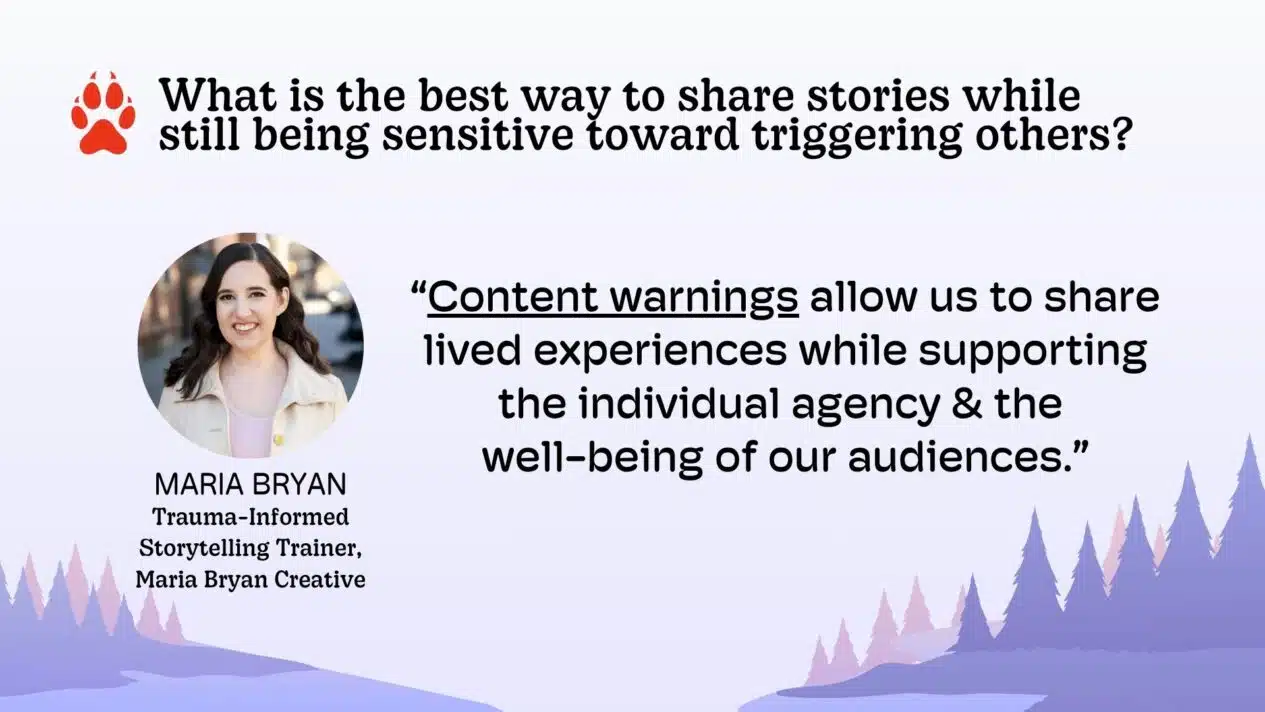
She does a lot of work specifically on trauma-informed storytelling. So if you want to get a certification in that, definitely take her course. It’s phenomenal. We send our customers to her all the time.
But she said, “Content warnings allow us to share lived experiences while supporting the individual agency and the wellbeing of our audiences.”
So, what she means by “the wellbeing of our audiences” is that when you clearly label distressing material, you’re giving your story consumer the ability to choose if they’d like to continue or not.
Let’s talk about where this might come into play.
This is my overall list of recommendations for warnings. Of course, your mission might have something else that you would want to put on this list, but as a kind of a top-level look, let’s talk about:
- Sexual assault
- Domestic abuse or child abuse
- Animal cruelty or animal death
- Self harm or suicide
- Eating disorders
- Violence
If somebody is coming to your website, it’s often once they’ve learned about your mission. Maybe they’re already a little bit prepared to take in content like this.
Regardless, it’s still a good idea to let people know ahead of time, before they start reading a story, that these topics might occur.
This also comes into play a lot when you’re thinking about posting things on social media, maybe things that go back to your website, like a new blog pos. Because you never know who might be triggered by your story when they’re just going about their day-to-day scrolling, right? When they’re just trying to take a few minutes out of their day and just plug into something else.
There is, of course, the classic saying — we’ve all heard it — and that is, “People won’t remember what you say, but they will remember how you made them feel.”
So you don’t want your brand associated with something that triggers people and makes them want to swipe away or X out of your website quickly because it’s made them uncomfortable.
Instead, we want to bring them into the conversation and make them feel like they have the agency to decide if they are ready for this content.
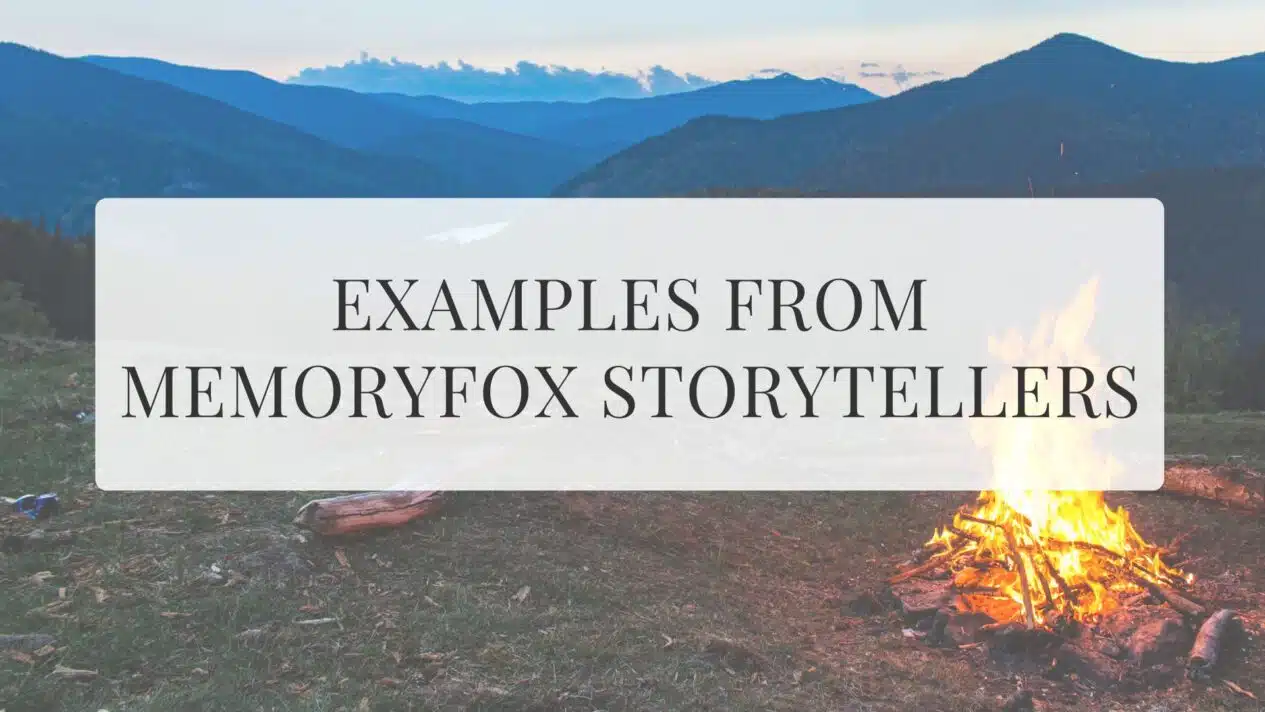
Ethical Storytelling Examples
That was my very quick overview, but now I want to show some examples from our own MemoryFox storytellers of content that they’ve shared on their own websites.
Let me see here. I’m going to change my share setting for a second. Okay, great!
This comes from PAN Foundation. They have this really great page called Stories.
And when they go to their website, they have this great page where they’re showing the smiling faces of the people, the stories, the photos that they submitted of themselves, along with their own story where you can click in and read more about Peggy. You can read more about Tim. They have all these great stories here and they go on and on.
The other really cool thing I want to share — so this is how they share their stories, right? But it’s not just an opportunity for them to share stories. They actually have this page set up where you also can now collect stories too.
So they have this here: If you’re a patient or a provider that works with them, you can share your story here. And it goes right to that MemoryFox link, of course. But then they have this, where they can go right to sharing their story.
Similarly they have, you know, if you want to talk about health policy specifically, here’s another way where you can share your experience right now. It goes to this other page where you can talk about that.
I love how they set this up where people have the option to kind of decide what they want to do.
Let’s take a look at another example here, Blessman International. I want to show you their website. This is their homepage.
This is all content that they have collected ethically through MemoryFox. I love this content because it’s really powerful, but you also can tell that it’s real, right?
You can see the real photos that somebody took while they were on their missions and they just show smiling faces, they show the real, raw stuff that they’re doing together, the real people that are enjoying, and they have some videos here as well to give you context.
Because a lot of people might not have the opportunity to go experience something like this in person. So being able to show real photos and videos of what their mission is doing in action is a very cool way that they are showing this on their website.
Another example from Cure Epilepsy. This is Stories from the Community, and it’s kind of similar to the PAN Foundation. They have this page set up where you can submit your story here at the top, which is super fun. If that was your intention, first thing you do is decide to come share your story here, or of course you can go through the stories.
And I love how they set this all up to be kind of interactive and different. It’s very appealing to the eye to want to check out these stories and to keep going down and scrolling down until you find ones you want to read or ones that you want to click further into.
Here’s another really interesting one from Linc Housing. They provide housing, but they actually provide full-service community support when it comes to housing.
So what they’ve done, which is a really cool way to collect and share stories, is they actually made it so their residents, the people who work with the individuals who are getting housing from them, are actually required to collect three stories a month and add it to their story page.
So if you are a supporter of Linc Housing, if you are a resident of Linc Housing, if you are a board member, you can always come to their website and see new content every single month.
This is their homepage. And I want to show you that they actually have this on their menu where it says Meet Our Residents right here.
And it links over to this page through MemoryFox, and they actually have all this content. The newest content populates right at the top here. You can click into each one and learn more about what’s going on here. And really, it’s just fun because you can see new stuff all the time.
Okay, final example before we get to our Q&A. We have this one coming from Urban Health Partnerships, which is their Harmonies for Health story page.
This is an embedded story page where again, it’ll be updated in real time. But this is on their website, right? Again, this is just a really fun example where they show the afternoon of one of their gatherings they had.
It’s an afternoon of music, purpose, community. They’ve got the date here. This one is pretty new, from last month. They had people submit videos of the event, all these wonderful photos, so people could really get a feel of what’s going on and the fun that was experienced at this event.
Alright, those are some great examples. I can talk more about them if anybody has any questions, of course. But just to wrap up quickly before we get to the Q&A, I want to say that if you want to learn more about these strategies, definitely download the report.
And now, David and Nickie, I’m ready. Let’s get some questions answered! What do you think?
What You Should Do Now
01. Come to Nonprofit Website Office Hours
We cover a new topic every few weeks. Plus get a live answer to any website-related question you're wrestling with.
02. Book a Website Call
Find a time to discuss your nonprofit's website needs. Discover what's worked for other nonprofits like you and see how easy building your new site can be.
03. Start a Free Website Trial
Try our nonprofit website platform for yourself. Instantly get access to every feature to see if it's the right fit for your needs. No credit card required.


Comments